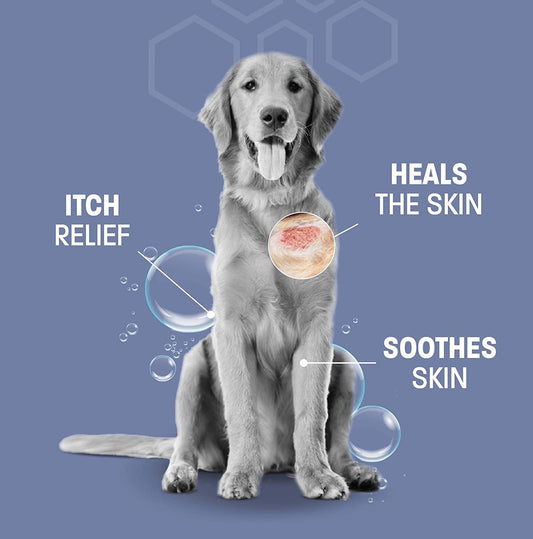Dog Yeast Infection in Feet: Causes, Symptoms, and Treatment
Dog yeast infection in feet is a common condition that can cause discomfort and pain for our furry friends. Understanding the causes, symptoms, and treatment options is essential for providing proper care. In this article, we will explore what a yeast infection is, the common causes of yeast infection in a dog's feet, how to recognize the symptoms, and effective treatment options.
Key Takeaways
- Yeast infections in a dog's feet can be caused by allergies, moisture, or a weakened immune system.
- Symptoms of yeast infection in a dog's feet include itching, redness, swelling, and a foul odor.
- Proper hygiene and regular cleaning of a dog's feet can help prevent yeast infections.
- Treatment options for dog yeast infection in feet include topical antifungal medications, oral medications, and dietary changes.
- Consulting with a veterinarian is important for accurate diagnosis and appropriate treatment of dog yeast infection in feet.
Understanding Dog Yeast Infection in Feet
What is a yeast infection?
A yeast infection in a dog's feet is a common fungal infection that affects the paws and nails. It is caused by an overgrowth of yeast, specifically the Malassezia species. This type of infection can be uncomfortable for dogs and may lead to itching, redness, and inflammation.
Common causes of yeast infection in dog's feet
Yeast infections in a dog's feet can be caused by a variety of factors. It is important to identify the underlying cause in order to effectively treat the infection. Some common causes of yeast infection in dog's feet include:
- Allergies: Dogs with allergies, such as food allergies or environmental allergies, are more prone to developing yeast infections in their feet.
- Moisture: Excessive moisture in the paws can create a favorable environment for yeast to grow.
- Poor hygiene: Neglecting proper foot hygiene, such as not regularly cleaning and drying the paws, can increase the risk of yeast infection.
- Weakened immune system: Dogs with weakened immune systems are more susceptible to yeast infections.
To prevent and manage yeast infections in a dog's feet, it is important to address these underlying causes and take appropriate measures to keep the paws clean and dry. Regularly cleaning and drying the paws, using antiseptic sprays, and providing a balanced diet can help maintain foot health and prevent yeast infections.
Recognizing the symptoms of yeast infection in dog's feet
Yeast infection in a dog's feet can cause discomfort and irritation. It is important for pet owners to be able to recognize the symptoms and seek appropriate treatment. Some common symptoms of yeast infection in dog's feet include:
- Persistent itching and scratching
- Redness and inflammation
- Foul odor
- Excessive licking of the paws
- Crusty or scaly skin
If you notice any of these symptoms in your dog, it is important to consult with a veterinarian for a proper diagnosis and treatment plan. Effective ear care is also crucial in managing yeast infections in a dog's feet, as the ears can be a source of recurring infections. Regular cleaning and maintenance of the ears can help prevent the spread of yeast and reduce the risk of reinfection.
Remember, early detection and treatment are key in managing yeast infections in a dog's feet and ensuring the well-being of your furry friend.
Effective treatment options for dog yeast infection in feet
When it comes to treating a dog yeast infection in their feet, there are several options available. It is important to consult with a veterinarian to determine the best course of action for your dog's specific condition. Here are some effective treatment options to consider:
A dog yeast infection in the feet can be a frustrating and uncomfortable condition for your furry friend. It can cause itching, redness, and a strong odor. At Pet Health Pros, we understand the importance of keeping your pet's feet healthy and free from infections. That's why we offer a wide range of affordable and top-grade pet health supplies, including products specifically designed to treat and prevent yeast infections in dogs. Our products are made right here in the USA and are backed by a 100% satisfaction guarantee. Don't let your dog suffer from yeast infection in their feet any longer. Visit Pet Health Pros today and give your pet the relief they deserve.
Managing Dog Yeast Infection in Feet: Causes, Symptoms, and Treatment Options
In conclusion, understanding dog yeast infection in feet is important for dog owners to ensure the well-being of their pets. By recognizing the common causes and symptoms of yeast infection in a dog's feet, owners can take prompt action and seek effective treatment options. It is crucial to consult a veterinarian for a proper diagnosis and to follow their guidance for the best course of treatment. With proper care and attention, dog yeast infection in feet can be managed and prevented, allowing our furry friends to live a healthy and happy life.
Frequently Asked Questions
What is a yeast infection?
A yeast infection is a fungal infection caused by an overgrowth of yeast in the body. In dogs, yeast infections commonly occur in the feet.
What are the common causes of yeast infection in dog's feet?
Common causes of yeast infection in a dog's feet include allergies, moisture, poor hygiene, weakened immune system, and underlying health conditions.
What are the symptoms of yeast infection in dog's feet?
Symptoms of yeast infection in a dog's feet may include itching, redness, swelling, odor, discharge, and licking or chewing of the paws.
How is dog yeast infection in feet diagnosed?
A veterinarian can diagnose a dog yeast infection in feet through physical examination, skin scraping, and microscopic examination of the samples.
What are the treatment options for dog yeast infection in feet?
Treatment options for dog yeast infection in feet may include antifungal medications, topical treatments, medicated shampoos, dietary changes, and addressing underlying causes.
Can a yeast infection in a dog's feet be prevented?
While it may not be possible to prevent all yeast infections in a dog's feet, maintaining good hygiene, keeping the paws dry, addressing underlying health issues, and avoiding allergens can help reduce the risk.









